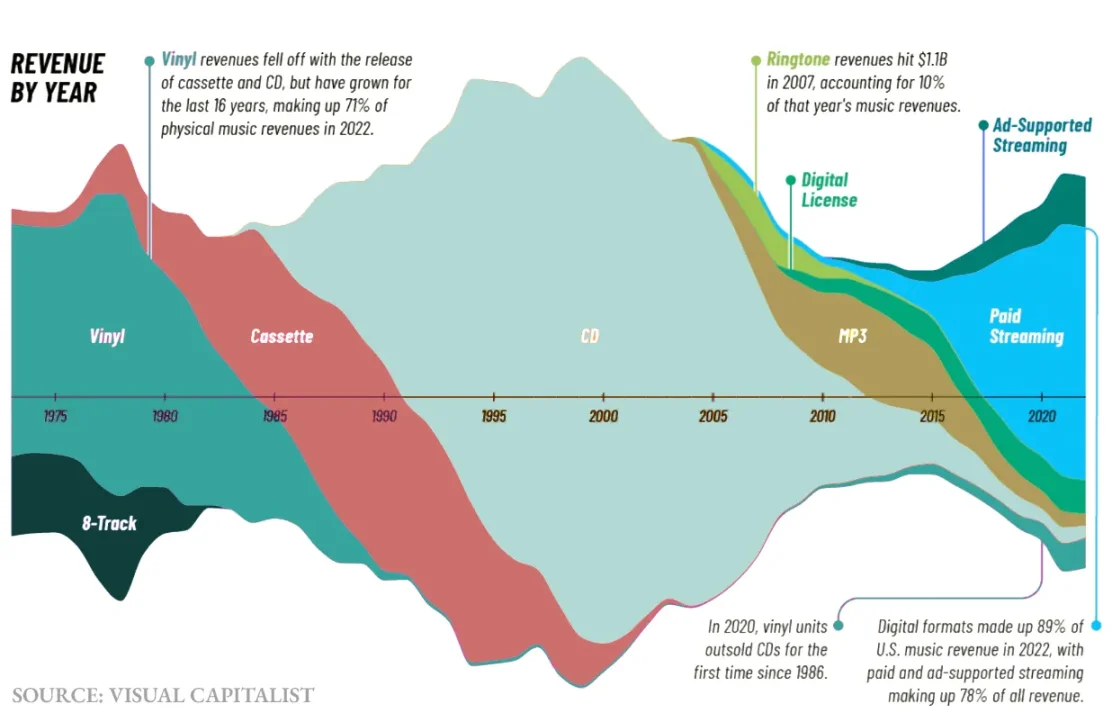Interpreting the Five Winning Projects from Solana's Latest x402 Hackathon
The Solana x402 Hackathon showcased cutting-edge applications such as AI-driven autonomous payments, model trading, and the IoT economy, indicating a new direction for on-chain business models.
Original Article Title: "Solana x402 Hackathon Wrap-up: Five Innovative Projects Stand Out"
Original Article Author: jk, Odaily Planet Daily
The two-week Solana x402 Hackathon came to a successful close in November, and the organizers officially announced the main track winners on November 25. This remote hackathon attracted enthusiastic participation from global developers, ultimately receiving over 400 project submissions. The previously hot AI payment protocol x402 is an internet-native payment protocol developed by Coinbase, aiming to enable AI programs to autonomously complete online payments like humans. The vision is to have your AI assistant not only help you look up information but also autonomously pay for data, subscribe to services, all of which are automatically done on the blockchain.
The hackathon set up five competition categories, with the top prize in each category reaching $20,000. Now, let Odaily Planet Daily take you through the innovations of these five award-winning projects.
Intelligence Cubed (i³): Trading AI Models Like Stocks
Intelligence Cubed has created a very interesting platform that can be understood as "Taobao + Stock Market for AI models." On this platform, AI models can not only be used but also bought, sold, and invested in.
Imagine this scenario: you are an AI model developer who has spent a lot of time training a powerful image recognition model. In traditional mode, you may need to set up servers, handle payments, and manage users on your own. But on the i³ platform, all you need to do is upload the model, set the price for each call (e.g., $0.01), and the platform will take care of everything automatically.
Even more interestingly, i³ introduces the concept of "model tokenization." Developers can sell ownership of the model in parts through IMO (Initial Model Offering, similar to an IPO for stocks). After investors purchase model tokens, whenever someone uses the model and pays a fee, token holders can proportionally share the revenue. If someone creates an improved version based on your model, your original model can automatically receive "royalties." The project also introduces the concept of "open-source threshold," where if more than 51% ownership of the model is held by the public, the model will automatically become open source to accelerate adoption and remixing.
Technically, i³ deeply integrates the x402 payment protocol. Every time a user wants to call an AI model, the system first generates a payment request, showing how much USDC needs to be paid. After the user confirms the payment via the Phantom wallet, the transaction is validated on the Solana blockchain, and the entire process takes only a few seconds. Only after payment confirmation, the AI model will start working and return results. The platform also provides a visual workflow editor where users can connect multiple AI models like building blocks to create complex processing flows, with the cost of each step clearly outlined.
PlaiPin (Solana ESP32 Native x402): Enabling IoT Devices to Handle Their Own Payments
What PlaiPin does sounds a bit like science fiction: they enable a low-cost microchip (ESP32) to manage its own wallet and make payments. What does this mean?
Imagine you have a smart temperature sensor that collects data every day. In the traditional mode, this sensor would need to send the data to a cloud server for humans to decide whether to sell the data. But with this technology, the sensor itself can become an independent "merchant": it can determine when the data is valuable, contact buyers on its own, receive payment on its own, and then store the money in its own blockchain wallet.
For example, if your smart refrigerator at home determines it needs to call an AI service to optimize the temperature control algorithm, it can pay 0.001 USD to purchase this service on its own, completely without human intervention. Or if your robotic vacuum encounters complex terrain while cleaning and needs to purchase a one-time call to a high-level navigation algorithm, it can also autonomously make the payment.
Technically, the breakthrough of this project lies in squeezing a complete blockchain wallet and payment capability into a small chip. The ESP32 chip internally stores its own key (like a bank card PIN) and can perform encrypted signatures to prove "this money is indeed what I want to pay." The entire payment process takes about 2-4 seconds: the device discovers the need for a paid service, automatically interprets the price and payment address, signs the transaction inside the chip, submits it to the blockchain network through a facilitator (which can be understood as a payment channel), and finally receives the service. Crucially, the user's wallet private key never leaves the chip, ensuring security.
The project code has been successfully tested on real hardware, and the developers have provided detailed installation instructions so anyone can purchase a set of hardware for a few tens of dollars to try it out. This opens up a whole new business model for IoT devices: enabling devices to become "electronic life forms" that can actively participate in economic activities.
x402 Shopify Commerce: Enabling Taobao Stores to Serve AI Customers in 2 Minutes
If the previous project was more technical, the x402 Shopify Commerce project is very down-to-earth. It aims to solve the problem: how can ordinary online stores serve AI customers?
Current online stores are designed for humans: they have images, shopping carts, and checkout buttons. But AI programs "do not understand" these. This project is like installing an "AI-exclusive channel" for online stores: store owners only need to do three things—Step 1, paste the URL and authorization code of their Shopify store (30 seconds); Step 2, select which products allow AI purchases (60 seconds); Step 3, open the monitoring panel to view orders made by AI (30 seconds). The entire process does not require writing a single line of code.
Once set up, the AI program can shop just like a human. For example, if a company's AI assistant receives the task "order 100 signature pens for the office," it will automatically search your store, check the product catalog, select the appropriate items, calculate the total price, and then pay with USDC. The entire process follows the standard x402 protocol: the AI initiates the purchase request, and your store automatically informs the AI that "X USDC dollars need to be paid to this address." The AI completes the transfer, the store verifies the payment, automatically creates an order, and the order appears in your Shopify backend like a regular order for you to fulfill.
This project cleverly combines two open standards: the MCP (Model Context Protocol) allows the AI to "understand" what products are available in your store, while x402 standardizes and automates the payment process. More importantly, because it uses blockchain for direct transfers, the merchant does not need to pay credit card processing fees (usually 3-5%), and the funds are received within seconds.
For early-stage AI startups, this means they can enable their AI products to purchase resources directly from vendors without manual approval or pre-funding. For e-commerce sellers, this opens up a new customer base—AI agents that autonomously make purchases on behalf of companies or individuals.
Amiko Marketplace: Establishing AI Credit Profiles
When an AI program starts spending money on services, a question arises: how do I know if this AI is trustworthy? Will it run off after making the payment? How is the quality of the service it provides? The Amiko Marketplace is here to address this issue by creating a "credit profile" for each AI on the blockchain.
The operation of this system is quite ingenious. Every time an AI program receives its first payment, the system automatically creates an identity profile for it, recording its wallet address and basic information. Each time the AI completes a job and receives payment, the system creates a permanent work record, including who the client was, how much was paid, the transaction hash, and other information. After using the service, clients can rate the AI (1-5 stars) and leave a review.
Most interesting is its rating mechanism: it is not a simple average but a "payment-weighted" average. For example, if an AI receives 5 stars in a $100 transaction and 3 stars in a $10 transaction, its overall rating will be closer to 5 stars because higher-value transactions carry more weight in the evaluation. This design prevents rating manipulation—if someone tries to manipulate ratings through numerous small transactions, the cost would be high, and the impact would be limited.
Here's a real-world example: You have developed an AI translation service with no initial reviews. A customer spends $50 using your service, is very satisfied, gives it a 5-star rating, and your profile now has its first positive review along with a record of "Total Transaction Amount: $50." As more customers use and review the service, your credit score will keep increasing. When potential customers see you have over 100 reviews and a total transaction amount of $10,000, they will naturally be more inclined to choose your service.
This system also has a "Lazy Registration" mechanism: New AIs do not need to register in advance. As long as someone pays for their service, a profile is automatically created in the system. This lowers the entry barrier, allowing any AI program to immediately start providing services and building a reputation. All work records, reviews, and ratings are permanently stored on the Solana blockchain, where anyone can view and verify them, but no one can tamper with them.
MoneyMQ: Turning Payment Systems into Configuration Files
The final award-winning project, MoneyMQ, is a developer tool based on the idea that "payment systems should be as simple as writing a configuration file."
In Web2, if you wanted to add payment functionality to your app, you would need to: register for a payment service provider account, integrate their SDK, write code to handle various payment states, set up a testing environment, handle refunds and disputes... This process could take weeks or even months. MoneyMQ simplifies all of this to "writing a few lines of YAML configuration on your laptop."
If you think of YAML as a commodity or a set of game rules, it would look something like this:
Product Name: Advanced API Access
Price: 0.1 USDC
Billing Method: Per Call
You write these rules locally, and MoneyMQ automatically starts a complete payment environment, including a product catalog, billing logic, test accounts, and more. You can simulate the entire payment process on your computer: initiate payment requests, verify x402 protocol, and check fund arrival. Once testing is successful, you can deploy it to the production environment with a single click, and all configurations take effect automatically. MoneyMQ has built-in support for the x402 and MCP protocols. This means that AI programs can not only use your service but also understand your billing rules and even help optimize your pricing strategy. For example, AI can analyze "How much will call volume increase if the price is lowered from 0.1 USDC to 0.08 USDC" and then suggest price adjustments.
The "Embedded Earnings" feature planned to be launched by the project is also quite innovative: the balance in your account will not sit idle, but will automatically participate in DeFi (Decentralized Finance) earning strategies. For example, if you earn 1000 USDC this month, that money will automatically earn a 4-5% annualized return until you decide to withdraw. This is a significant additional income for cash-flowing businesses.
MoneyMQ has already provided a Homebrew installation package for macOS, allowing developers to install it with a single command.
Final Thoughts
Of course, these projects are still in the early stages, but the possibilities they showcase are already exciting enough. For the average user, this technology may still seem somewhat distant. But imagine this: perhaps in the near future, your smart home system will purchase a weather forecast service on its own to decide whether to water the plants, your dashcam will sell the captured road condition information to mapping companies, your health monitoring wristband will pay to use the latest AI diagnostic models... When AI can autonomously handle these microtransactions, our digital life may become even smarter and more convenient.
The organizers stated that the winners of the partner track will be announced next week.
Disclaimer: The content of this article solely reflects the author's opinion and does not represent the platform in any capacity. This article is not intended to serve as a reference for making investment decisions.
You may also like
Aspecta launches Atom upgrade: 100X potential of illiquid assets - trustless tokenization and universal liquidity
Aspecta has launched the Atom upgrade, introducing a brand-new blockchain technology architecture that establishes a non-liquidity asset trading standard based on the AMM mechanism, integrating spot and derivatives trading, all within a framework that requires no centralized trust.

From "Subscription Hell" to Precise Payment: A History of the Evolution of Internet Pricing Models
This will be the topic we will delve into next: how developers can use x402 without worrying about potential failures in the future.

4 Catalysts That Could Boost Bitcoin

Vitalik Buterin Charts ‘Targeted Growth’ as Ethereum Hits 60M Gas Limit Milestone
